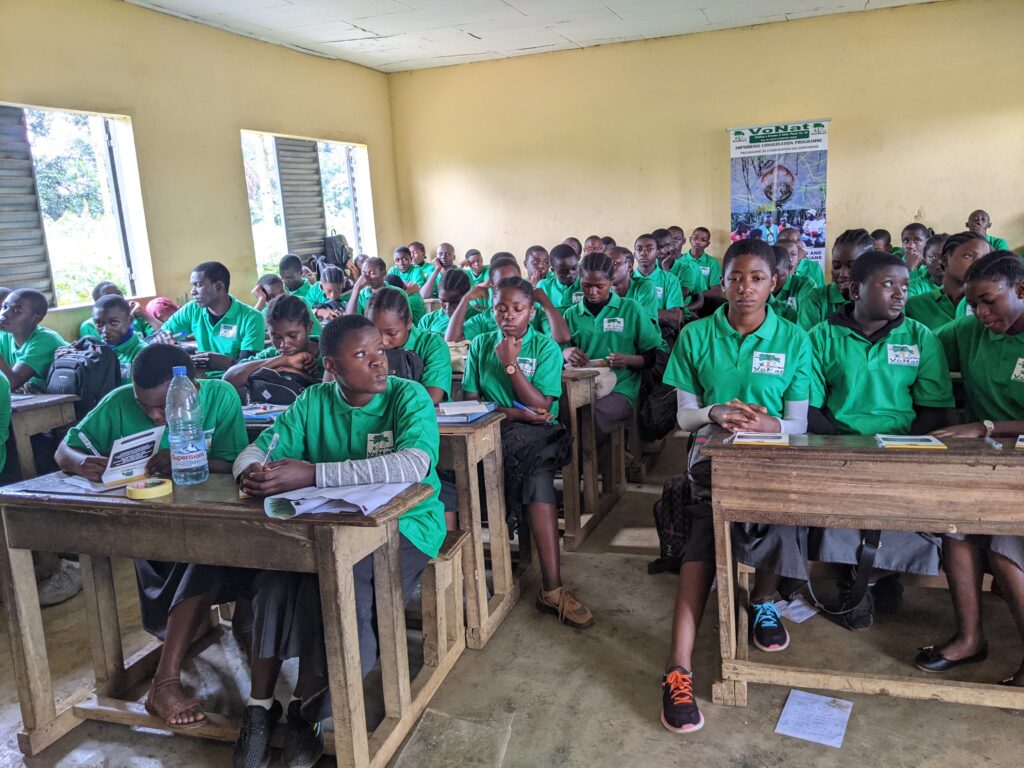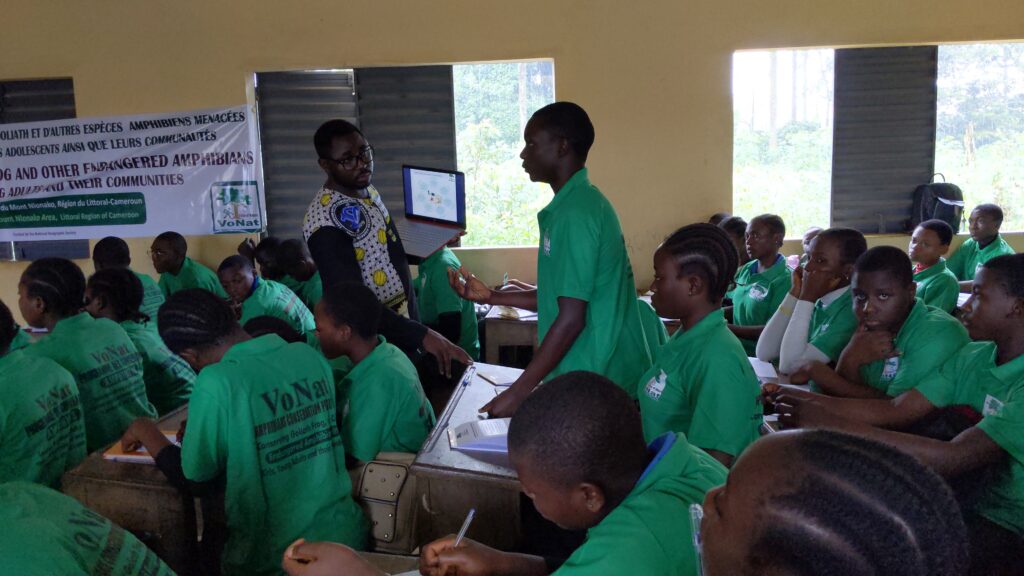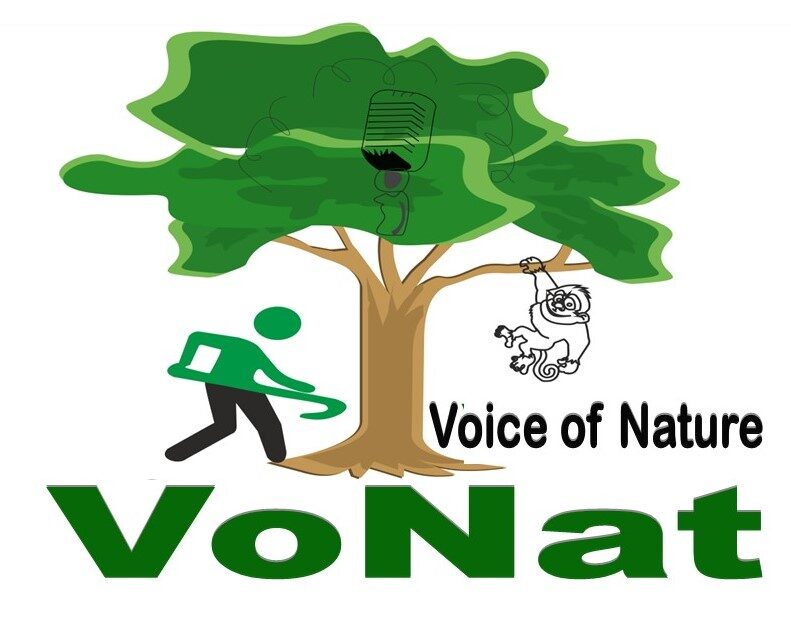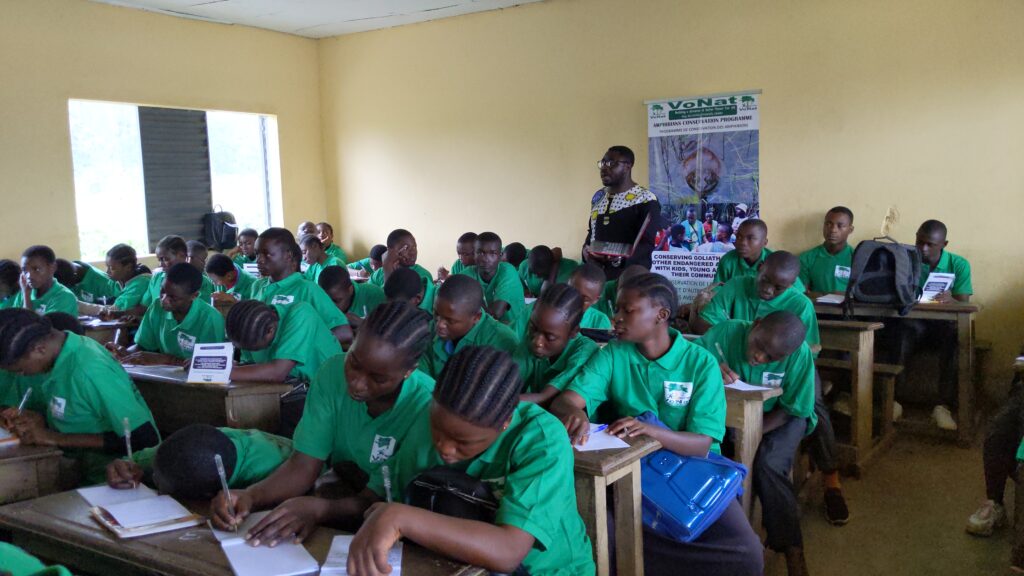About 100 kids and young adults from 7 communities in the Mount Nlonako Area, Littoral Region of Camerloon have been enlightened on some endangered amphibians in their communities, conservation threats and importance, and the role they can play in conserving the species. This was the outcome of a conservation education session organized in Ebone by the Executive Director of Voice of Nature (VoNat), Ndimuh B. Shancho, as part of his project to conserve world’s largest frog in the Mount Nlonako Area from extinction with community kids Funded by the National Geographic Society.

The future conservation ambassadors were taken through an experiential learning session where they were given knowledge about amphibians, characteristics, types, threats , importance of conservation, suitable conservation methods and their role in conserving amphibians in their communities, most especially the Goliath Frog emphasized. “Hunting for food in its native range is the biggest threat to the conservation of goliath frogs. Pet trade, habitat loss and degradation are also great threats to the existence of this species. It is important to conserve this amphibians species due the numerous importance and multiple roles play especially in ecosystem,” Mr. Shancho said, while also leading the youngsters to identify key actions that they can take in their communities to conserve endangered amphibians species and their habitats from destruction.
The amphibians conservation education enlightened the understanding of these youngster about the emblematic species. “It a great honour to know that the largest frog in the world is found only in two countries and my country and more precisely my community is one of those places,” said Lablanche Sidonie, from Ntolo village.

With the new found love in and admiration for the goliath frog and other endangered species in their communities, the future conservation leaders left the conservation education session determined to educate their peers and families about amphibians conservation. “I will take all what I have learnt about these amphibian to my friends who were not hear today and to my community. I will sensitize them about the importance and dangers of the depletion of amphibian species” Mbotcheu Marie Therese from Ngongnine said.
Other species noted as worthy of conservation in the Mount Nlonako Area include: Amnirana asperrima (Nkongsamba Frog), Astylosternus laurenti (Laurent’s Night Frog),Cardioglossa venusta (Highland Long-fingered Frog), Astylosternus perreti (Perret’s Night Frog ),Leptodactylodon mertensi (Mertens’ Egg Frog), Leptodactylodon ornatus (Ornate Egg Frog), and Petropedetes perreti (Perret’s Water Frog).
By Akeabeh Sandrine

